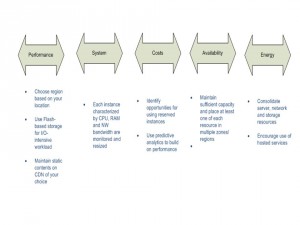Since beginning of 2010, basic cloud models like Private, Public and Hybrid have been well understood by organizations. What seems apparent but should not be is a tendency to marginalize these three models. Your cloud adoption should have some Chaos i.e. a blend of Private, Public and Hybrid to thrive and derive benefits.
Most IT enabled organization’s have a support division which provides centralized or shared IT services like Exchange, SharePoint etc. As they embark on their cloud journey, they are faced with a continuous challenge of profiling applications for cloud readiness, understanding impact of orphaned IT assets in their data center and getting into a holy-grail of better-faster-cheaper way of delivering services using a Cloud.
One way to best address Business requirements is to right size a mix of on-premise, hosted and hybrid solutions that will cater to your organizations cost and security objectives along with its psychological temperament.
Office of the CIO can derive a blue-print by:
- Assessing Network Bandwidth and Storage requirements
- Assessing Non-production environments
- Analyzing re-platform, re-hosting and standardizing opportunities
- Evaluating Out-of-box SaaS and PaaS solution alternatives
- Lowering risks to allow continuous change and deployment of your customized applications in the cloud

